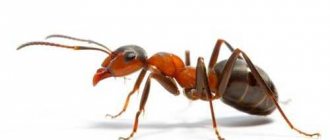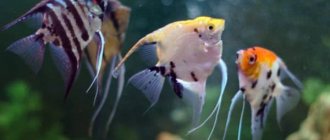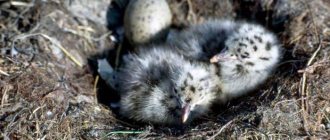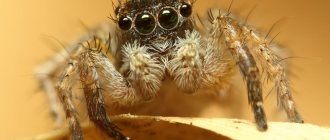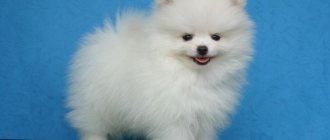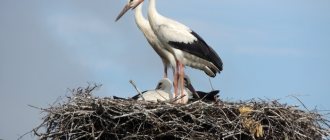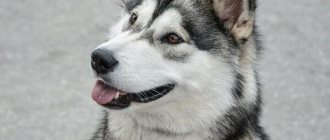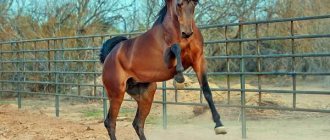Bees appeared as a result of natural and artificial selection, which people began during the development of beekeeping and beekeeping. Because of their honey, these insects are the most useful on the farm. Ancient people specially bred bees, and honey was used not only for food, but also as medicine. Bees live in different parts of the planet and are distinguished by their external characteristics, stability, productivity and other qualities.
Types of bees
At the moment, about 21 thousand bees are known, which are united in 520 genera. Let's consider the main ones:
Himalayan bee
They differ from Hymenoptera by their bright yellow-black body color. These representatives are most often found in mountainous regions. These insects are notable for the fact that they have a fairly calm character and are resistant to ticks. The honey from these bees is collected by the Gurung people of Nepal. It is noteworthy that their honey has hallucinogenic properties. This fact is due to the fact that in the territory in which they live there is a large number of rhododendrons. During the flowering period, these plants produce andromedotoxin, which is a strong poison. When it enters the human body, it contributes to the appearance of hallucinations.
Leaf Cutter Bee
The appearance of this bee is very similar to ordinary wasps. They have a body length ranging from 8 to 16 millimeters. They are distinguished by the presence of a strong jaw, thanks to which they can cut leaves. Leaf cutters feed on nectar. They can be found in latitudes where a temperate climate prevails. Over the course of a bee’s entire life, only 25 plants can be pollinated, since they have a rather short life cycle.
Bashkir bee
This species of bees is found in European countries. Their body color is gray without the characteristic yellow stripes. These insects have perfectly adapted to various climatic conditions, as they are able to fly out of the hive even in the cold.
Yellow Caucasian bee
These representatives are considered one of the most common breeds and are found in the mountains. They are capable of producing high-quality honey, but they tolerate cold extremely poorly and are endowed with poor immunity. About 7 percent of these bees have a swarming instinct.
Gray Caucasian bee
A distinctive feature of this bee is its gray color. The entire body lacks the yellow stripes that are characteristic of most bees. This representative is divided into several subspecies depending on its habitat: Abkhazian, valley, Kakheti, Imeretian and Megrelian. Insects of this species do not tolerate moving to places with a cold climate.
Italian bee
These individuals began to spread throughout the Apennine Peninsula. They are distinguished by gray, gold or three-stripe color. Golden bees are most often bred. Individuals of this species are large in size and have a trunk length of about 6.5 millimeters. Italian bees themselves are quite peaceful, but are aggressive in times of danger. It is quite difficult for them to live on the territory of Russia, since they endure winter with great difficulty.
Asian bees
Certain species of honey bees have spread to Asia. They have a number of characteristic differences. At the moment they number 9,000 species. The main representative is the large bee Apis dorsata laboriosa . In addition to their large size, the abdomen of these individuals is dark in color with white stripes. Between the main pairs of eyes there is an additional pair. These bees live on steep cliffs where they build their hives. Their bite is very painful.
Ukrainian steppe bee
Bees of the Ukrainian steppe breed are adaptive to serious temperature fluctuations, thanks to which they can tolerate wintering well. These bees prefer plants that are high in sugar. About 10% of all bees of this species are prone to swarming. They are also distinguished by good fertility and unique cleanliness, which is manifested in the fact that the hives of these bees are not clogged with debris and wax.
Don bee
This species is also characterized by fairly high fertility. Their color is represented by brown stripes. During the reproductive period, the queen lays about 3,000 eggs per day. However, members of the family are very prone to swarming. They feed mainly on the nectars of sweet clover, oregano and acacia.
Thai bees
The appearance of these bees is represented by a dark abdomen and the absence of characteristic stripes on the surface. Also, the wings of these bees are much darker. The insects themselves are distinguished by a calm character and a high degree of efficiency. Their honey is famous for its soft and pleasant taste.
Abkhazian bee
You can meet this bee in the mountainous regions of the Caucasus. They prefer to live on steep cliffs, which is why they are also called stone bees. They are widely used for breeding due to their delicious and unique honey. They are cultivated in the USA and Western Europe. This species is distinguished by its disproportionately long trunk.
Melipona bees
The peculiarity of this species is the absence of a sting. Instead, they actively use their scent glands. If attacked, the melipon bee can use its mandibles. These individuals are also notable for the fact that they do not have a specific division of labor. Their hives are similar to bumblebee nests. Melipona honey is widely used in the Yucatan Peninsula as the bees in this region produce the most delicious honey. A very small population has survived to this day.
Altai bee
This type of bee is quite rare. They are widely used in Altai to produce honey, which has a number of beneficial properties. This species is also particularly productive and carefully uses its food supply.
Siberian bee
These bees have spread throughout Siberia, making them quite frost-resistant. They are valued due to their high resistance to a large number of diseases. They are also distinguished by their rather large size and high degree of fertility.
How to determine the breed of bee
Bee breeds have indicators that were formed under the influence of evolution. Properties important for life were created for certain weather and climatic conditions, methods of protection and camouflage, and food production.
Bees are divided into two large groups based on color. Insects of yellow and light colors feel good in the heat and do not overheat in the sun. This is a property of steppe and southern breeds. Darker individuals attract heat from the sun. They are more often found in regions with colder climates.
Interesting! There are blue and almost black species, for example, the carpenter bee.
The source of nutrition is judged by the state of the proboscis. If this organ is oblong and elongated (6.8–7.5 mm or more), then the bee is oriented towards forbs. Insects with a shortened proboscis collect honey from any one crop. For example, the Central Russian bee loves linden and buckwheat.
Insects are often divided according to their level of aggressiveness. The most evil types of bees are German, Bashkir and Burzyan.
general description
The appearance of bees is represented by a three-part body: head, chest and abdomen. The entire surface of the bees' body is covered with small hairs, one part of which serves the function of touch and is also connected with the nervous system. The most sensitive organ of bees is their antennae, which allow them to navigate in the darkness of their hives. Thanks to the presence of a movable jaw, bees are able to build large cells from wax, as well as collect pollen from plants and leave the closed cell.
Adult bees reach sizes from 12 to 15 millimeters. Their abdomen is represented by 6 segments, on which rather thin and elastic wings with transparent veins are attached. On the head of these insects there are two large ones, and on the crown of the head there are three more small ones, which are used to recognize polarized light, thanks to which they can navigate by the sun.
In the area of the back of the abdomen there is a stinging organ, which contains two poisonous glands and a sharp sting up to two millimeters in length. The shape of the sting allows it to easily penetrate the skin of an animal or person. When it hits, the bee injects its poison and then dies.
A bite from about five hundred or a thousand bees can be fatal. Adult individuals can reach very high speeds and can also move up to 4 kilometers from the hive territory.
Cuckoos
This species of bee lives in Australia and the southeastern regions of Asia. They are large in size and black and blue in color with shiny hairs. They do not build nests, but give offspring to relatives of the Amegillus genus. Cuckoo bees are slow and lazy, unable to collect pollen.
It is impossible to give an exact answer to the question: “What breeds of bees are the best?” Each breed has its own advantages and disadvantages, which makes it optimally suitable for certain conditions.
Based on the above information, we can conclude that the best bee breeds for the neutral, central zone of Russia are Central Russian and Carpathian.
Lifestyle
Bees differ from other insects in their large groups, which are represented by hives with a strict hierarchy and division of labor. Representatives of this hierarchy include the queen, drones and worker bees. In the society of bees, the queen is the main one, and worker bees are responsible for ensuring the functioning of the hive. Males serve only for procreation. The queen is solely responsible for the reproduction of offspring, and she is also the creator of the entire hive and is responsible for its improvement until the worker bees appear.
Ukrainian steppe
Has a light gray color. They develop slowly in the spring, as they do not like to fly in cold weather. They live in Ukraine in steppes and forests. When collecting honey, they like to develop sunflowers.
They are good defenders of their nest. Productivity is average, but pollen production is very small.
Lifespan of bees
The lifespan of bees largely depends on the territory of its distribution and place in the bee hierarchy. Worker bees do not live long. If she was born between spring and summer, then her life expectancy will not exceed one month. This is due to the fact that these bees are constantly working. Worker bees that are born in the fall live for about six months. As a rule, they survive the winter and live until spring to begin active work collecting honey and nectar.
Drones have an even shorter lifespan. On average, it is about 2 weeks. These insects are ready for fertilization almost immediately, and then die. The drones that survive are sent to their deaths, expelled from the hive.
The uterus leads in life expectancy. The average period of its serviceability is about 5 years. However, to do this, she must be very important in the hierarchy and constantly produce offspring.
Leaf cutter
These insects differ from their relatives in their flattened body, large rounded abdomen, non-standard head shape, narrow long proboscis and strong mandibles capable of cutting leaves, which is why they got their name.
This breed of bees is bred to pollinate strategically important honey plants (alfalfa, melons, vegetables). Leafcutter bees do not produce honey and lead a solitary lifestyle.
Bee nutrition
Almost all bees eat pollen and flower nectar. A special proboscis is used to extract it. Through it, the nectar enters the crop, where it is converted into honey. In the process of collecting pollen and nectar, flower pollination is of great importance. In search of plants, these insects are able to fly about 10 kilometers per day.
Buckfast
Buckfast is especially popular among beekeepers around the world. They have many advantages: they produce a large amount of honey, effectively fight mites, clean hive nests well, do not form swarms, are characterized by high hard work, disease resistance, vitality, a keen sense of smell and a peaceful character. They can collect honey in any conditions, but prefer rainy weather.
The only drawback of the breed is low winter hardiness.
Bee Reproduction
The process of reproduction in bees is carried out by laying eggs. Fertilized eggs give birth to full-fledged bees. If there was no direct fertilization, then drones are born. In order for the offspring to be viable, the queen must be fertilized by drones from other families.
Queen bee development
Bee eggs go through three stages: larva, prepupa and pupa. If the number of bees in a family becomes very large, then swarming occurs. One part of the bees remains in the hierarchy with the queen, and the second part looks for a new place with a new queen.
Reproduction diagram of the queen bee
Central Russian
The second name is the dark European bee. Has a dark body color. Young representatives reach a weight of 110 mg and are considered the largest in the world. They can exist in cold climates, as they have high frost resistance.
The enormous fertility of the queen produces up to three thousand eggs per day. Insects are quite vicious and do not like it when their territory is invaded too much.
They have great efficiency and produce up to two hundred kilograms of honey per year. For the above characteristics, this type of bee can be considered one of the best.
Bee distribution area
You can meet bees almost everywhere, with the exception of places where there are no flowering plants. Bees prefer to inhabit mountain crevices, hollows of old trees and earthen burrows. The main criteria are protection from the wind and the presence of liquid near the hive. Often bees can live in the attics of houses or between walls.
At the moment, the number of bees around the world is rapidly declining. The main reason for this sharp decline in populations is still unknown, but most often it is due to human activity in destroying the natural habitat of insects, the frequent use of chemicals for fertilizers and changes in the Earth's climate.
Far Eastern
This species was formed by crossing many categories. In this regard, individuals have low fertility. The body color is gray and the size is medium. The earliest plants are selected to collect honey.
Propolis: what it is, what it consists of, how it is made and what it is used for. 125 photos and videos of propolis productionBeeswax: composition, chemical properties, production and consumption. 105 photos of beeswax and its uses
Beekeeping for beginners: basics, tips, care features and rules for organizing a business (110 photos + video)
When selecting honey bees, you need to pay attention to the above descriptions of bee breeds. Then the beekeeper, guided by various signs, will be able to choose the best species to keep in his living conditions.
Content:
- How to choose the right breed of bees
- Climate dependency
- Features of a bribe
- Type of honey
- Character and disposition of bees
- Disease resistance
- Popular bee breeds
- Video “Breeds of Bees”
- Some tips for keeping bees
If you have been dreaming of an apiary for a long time, then in addition to its equipment, you need to decide on the breed of bees. The insects' frost resistance, performance and character depend on the selected breed. The productivity of bees affects the amount of honey collected, and, therefore, the profit of the future apiary. In addition, angry bees are more difficult to work with, although in many ways their attitude reflects the correct handling and experience of the beekeeper.
Comparative table of varieties
| Breed | Main features | ||||
| Coloring | Proboscis length, mm | Wing length, mm | Discoidal offset | Body weight, mg | |
| Abkhazian | Silver | 6,3-6,8 | Negative | 90 | |
| Asian | Yellow-black | 4 | 6 | ||
| African | Dark gray, bright yellow | 5,45-7,04 | 8,2-9,5 | 110 | |
| Central Russian | Dark gray | 5,9-6,4 | 9,35-9,5 | Negative | 110 |
| Italian | Golden yellow | 6,4-6,7 | 9,31 | 113-210 | |
| Carpathian | Light gray | 6,5-6,7 | 9,33 | Positive | 210 |
| Krajina (Karnika) | Silver gray | 6,4-6,8 | 9,26 | Negative | 110 |
| Ukrainian | Light gray | 6,3-6,7 | Positive | 105-200 | |
| Far Eastern | Gray or gray with yellow | 6-6,8 | 8-9,3 | Neutral | 105-230 |
| Buckfast | Dark yellow | 6,8 | 9,5 | Positive | 110-210 |
